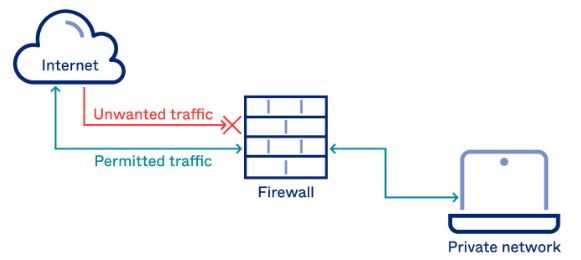Understanding Authentication, Authorization, and Accounting (AAA) Concepts
In today's interconnected world, securing access to networks and resources is crucial for maintaining confidentiality, integrity, and availability of information. To achieve this, organizations rely on a robust authentication, authorization, and accounting (AAA) framework. In this blog post, we will explore the concepts of AAA, its real-time use cases, and how it can be configured on Cisco devices.
What is AAA and How is it Used?
AAA is an acronym for Authentication, Authorization, and Accounting. These three concepts form the foundation of access control in computer networks. Let's take a closer look at each of them:
1.1. Authentication:
Authentication verifies the identity of users or devices attempting to access a system or resource. It ensures that only authorized entities gain entry. Common authentication methods include passwords, digital certificates, biometrics, and multi-factor authentication. By employing robust authentication mechanisms, organizations can prevent unauthorized access and protect sensitive information.
1.2. Authorization:
Authorization determines what actions or resources an authenticated user or device can access. It sets the boundaries for user permissions and privileges within a system. By assigning appropriate access levels, organizations can enforce security policies, restrict unauthorized activities, and prevent data breaches or misuse.
1.3. Accounting:
Accounting involves tracking and recording user activities for auditing and billing purposes. It helps organizations monitor resource usage, identify potential security threats, and ensure compliance with regulatory requirements. Accounting records can provide valuable insights into network usage patterns and assist in troubleshooting network issues.
Real-Time Use Cases for AAA:
AAA plays a vital role in various real-time use cases across different industries.
2.1. Enterprise Networks:
In large organizations, AAA is used to control access to corporate networks and resources. Employees, partners, and guests are authenticated before being granted access. Authorization policies ensure that users have appropriate privileges based on their roles. Accounting records can help in tracking network usage and allocating costs.
2.2. Internet Service Providers (ISPs):
ISPs rely on AAA to authenticate and authorize subscribers accessing their networks. By validating user credentials and allocating appropriate resources, ISPs can ensure fair usage and prevent unauthorized access. Accounting data enables accurate billing and capacity planning.
2.3. Wireless Networks:
AAA is essential in wireless networks, where users connect through Wi-Fi or other wireless technologies. By implementing AAA, network administrators can enforce authentication, manage user access, and control bandwidth allocation. Accounting records help identify excessive resource consumption and potential security incidents.
Configuring AAA on Cisco Devices:
Cisco devices offer robust AAA capabilities, allowing organizations to implement secure access control. Let's explore the steps involved in configuring AAA on Cisco devices:
3.1. Enabling AAA:
To enable AAA on a Cisco device, use the command "aaa new-model" in global configuration mode. This command activates AAA and makes it available for further configuration.
3.2. Configuring Authentication:
Cisco devices support various authentication methods, including local username and password databases, Remote Authentication Dial-In User Service (RADIUS), and Terminal Access Controller Access Control System (TACACS+). Authentication can be configured using the "aaa authentication" command, specifying the authentication method and associated parameters.
3.3. Setting up Authorization:
Authorization in Cisco devices is controlled through access control lists (ACLs) or by connecting to external servers such as RADIUS or TACACS+. The "aaa authorization" command is used to configure authorization parameters, specifying the method and related attributes.
3.4. Implementing Accounting:
To enable accounting on Cisco devices, the "aaa accounting" command is used. The command allows you to specify the accounting method, record type, and destination where accounting data will be sent.
Conclusion:
AAA, comprising authentication, authorization, and accounting, forms the bedrock of access control mechanisms in computer networks. By employing AAA, organizations can ensure only authenticated and authorized users gain access to resources while keeping track of user activities. Configuring AAA on Cisco devices enables organizations to build secure network infrastructures that protect valuable information and maintain compliance with industry regulations.
By understanding AAA and its real-time use cases, network administrators can implement robust access control measures, safeguarding their networks against unauthorized access and potential security breaches.
Remember, in an interconnected world, the security of your networks and resources should never be taken lightly, and AAA plays a critical role in ensuring the integrity and confidentiality of your information.


























